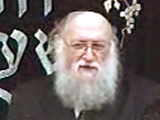Beit Midrash
- Torah Portion and Tanach
- Shmot
- Tetzave
Melachim I, 5:27-30 lists numerically the tens of thousands of workers who were sent to prepare the materials for the building project. These p’sukim seem to contradict later p’sukim: "All of the people who remained from the Emori, the Chitti, ..., who were not from Bnei Yisrael, their children who remained after them in the Land, whom Bnei Yisrael could not remove, Shlomo made them a workers’ force to this day. From Bnei Yisrael, Shlomo did not take a servant for they were his men of war ..." (ibid. 9:20-22). These p’sukim imply that the members of Bnei Yisrael were not forcibly enlisted for the project.
The latter perek mentions further taxes for the building of the House of Hashem, Shlomo’s own house, the milo (the palace of Paroh’s daughter = Bat Paroh), the wall of Yerushalayim, and cities throughout his kingdom. The navi also mentions an extensive bureaucratic apparatus; no official in charge of the area of Yehuda is mentioned.
The solution to this whole matter is likely as follows. Originally, Shlomo concentrated on building the Beit Hamikdash. For this purpose, he enlisted just the remnants of the former nations of the land. Bnei Yisrael were happy that the Beit Hamikdash was being built and without the need for them to be forced laborers. Eventually, Shlomo decided to expand the capital city surrounding the Beit Hamikdash. This included the ostentatious palace of Bat Paroh, as well as many national building projects. This forced him to enlist more workers, including from Bnei Yisrael. The heavy burden created discontent and attempts to avoid Shlomo’s demands, which were put down by force (the whips we referred to last week). Yerovam, who was in charge of the "labor of the house of Yosef" (ibid. 11:28), was particularly dismayed over the work on Bat Paroh’s palace.
It should be no surprise that with Shlomo’s death and the attempt to coronate Rechavam, Yeravam returned from exile in Egypt and raised the issue of the monarchy’s heavy handedness. Similarly, we can understand why Chazal tied together the building of the Beit Hamikdash and the marriage to Bat Paroh with the following statement. "When Shlomo married Bat Paroh, the angel Gavriel drove a stick into the sea, which caused an accumulation of debris upon which the great metropolis of Rome was built" (Shabbat 56b).
Let us pray that we will merit seeing the rebuilding of the Beit Hamikdash, a rebuilt capital of Yerushalayim with pleasant ways and with a stress on the donation, and the uplifting of the spirit and the heart, even if it will include an element of tetzaveh (the name of the parasha, meaning, command).






















